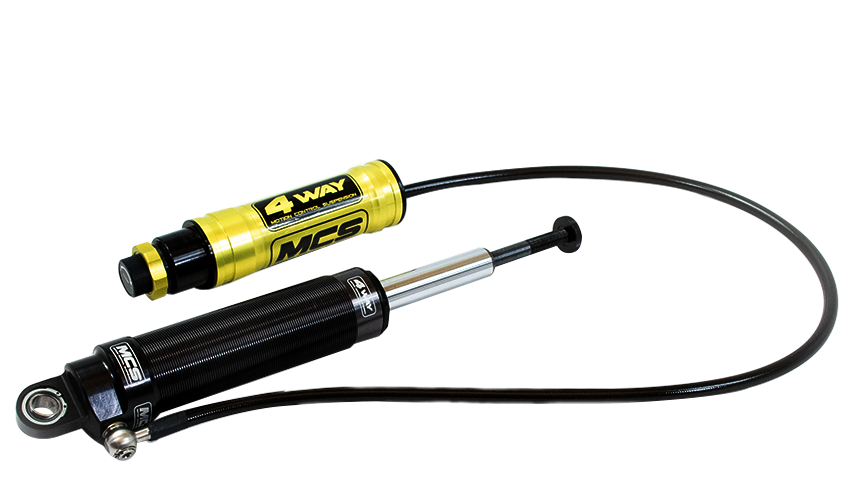Mitsubishi Lancer Evolution 7/8/9 4WR w/ 60mm hardware
Couldn't load pickup availability
The MCS 4W damper is a quadruple-adjustable shock featuring an external reservoir. It offers independent adjustments for high-speed compression, low-speed compression, high-speed rebound, and low-speed rebound damping forces. Additionally, gas pressure is adjustable. The high-speed and low-speed compression adjusters are located on the remote reservoir head, while the high-speed and low-speed rebound forces are controlled using a single, clever knob. When the knob is in the "down" position, it adjusts high-speed rebound, and when in the "up" position, it adjusts low-speed rebound.
High-speed compression damping is precisely controlled by a large blow-off valve located within the piston assembly in the remote reservoir head. Low-speed compression is managed through orifices in the same assembly, offering fine hydraulic control of damper oil.
High-speed rebound is controlled by a blow-off valve directly within the piston assembly inside the damper body. Low-speed rebound is adjusted via orifices at the main piston in the damper body, ensuring precise hydraulic regulation of the damper oil.
Gas pressure is adjusted via a Schrader valve at the end of the remote reservoir, allowing for precise tuning of overall vehicle support. The reservoir pressure can be adjusted from 100 to 275 PSI, optimizing the platform for fast cornering with large loads or enabling more weight transfer in low-grip situations to generate additional traction.
The MCS 4W dampers are packed with advanced technical features, all executed with a clean, functional design. The monotube construction provides superior stability, greater oil capacity, and better heat dissipation compared to twin-tube dampers. The large shafts offer exceptional low-friction side-load support, even in inverted or strut applications. A large main piston delivers quick and accurate damper response, while a divider piston separates oil and gas, preventing cavitation that can cause noise or poor performance. The use of orifices allows for a clearly defined operating range, consistent damping force adjustment per click, and reduced fatigue over time. The blow-off valves efficiently manage high-speed forces to maximize mechanical grip.

